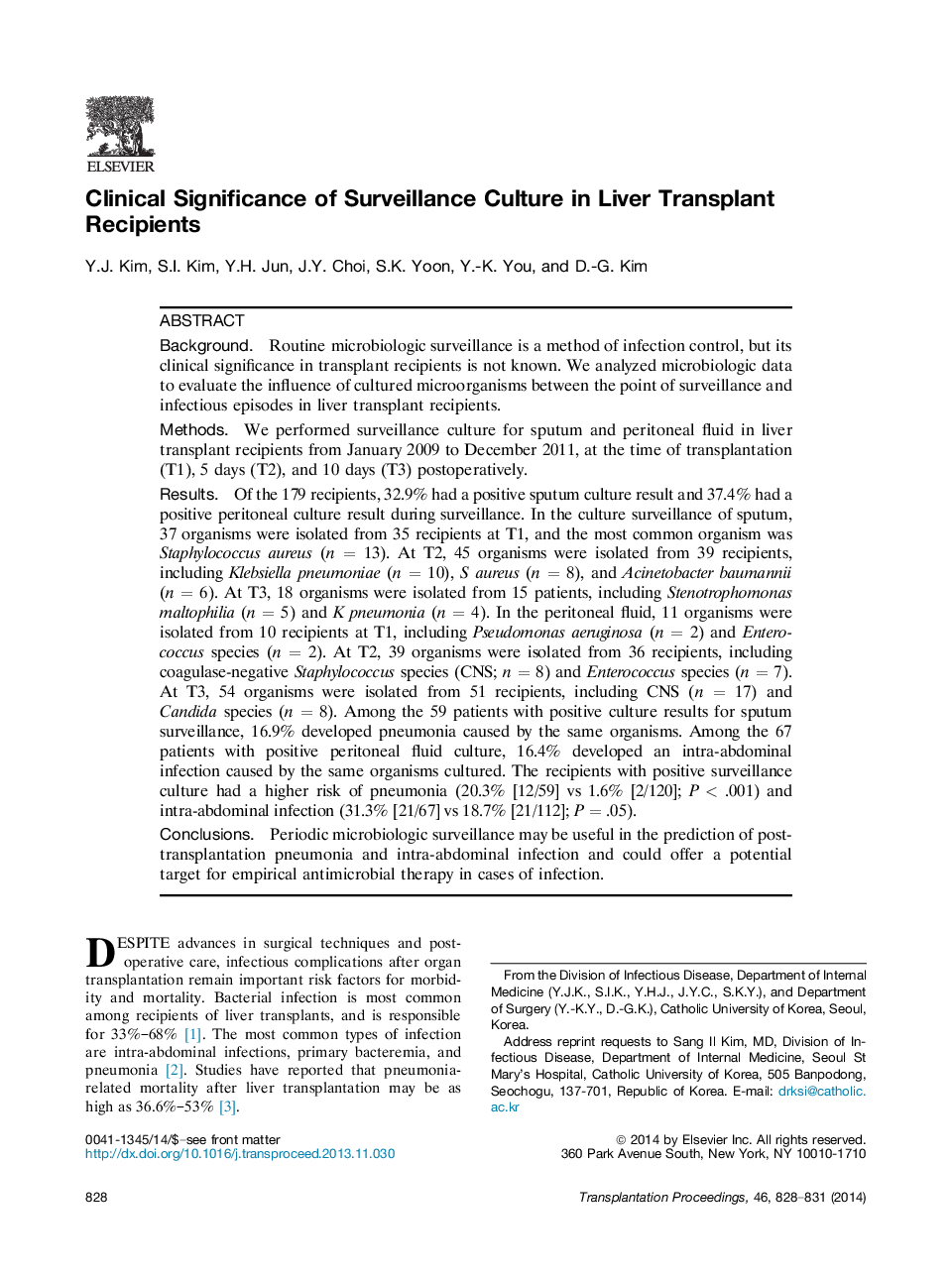| کد مقاله | کد نشریه | سال انتشار | مقاله انگلیسی | نسخه تمام متن |
|---|---|---|---|---|
| 4258404 | 1284557 | 2014 | 4 صفحه PDF | دانلود رایگان |
BackgroundRoutine microbiologic surveillance is a method of infection control, but its clinical significance in transplant recipients is not known. We analyzed microbiologic data to evaluate the influence of cultured microorganisms between the point of surveillance and infectious episodes in liver transplant recipients.MethodsWe performed surveillance culture for sputum and peritoneal fluid in liver transplant recipients from January 2009 to December 2011, at the time of transplantation (T1), 5 days (T2), and 10 days (T3) postoperatively.ResultsOf the 179 recipients, 32.9% had a positive sputum culture result and 37.4% had a positive peritoneal culture result during surveillance. In the culture surveillance of sputum, 37 organisms were isolated from 35 recipients at T1, and the most common organism was Staphylococcus aureus (n = 13). At T2, 45 organisms were isolated from 39 recipients, including Klebsiella pneumoniae (n = 10), S aureus (n = 8), and Acinetobacter baumannii (n = 6). At T3, 18 organisms were isolated from 15 patients, including Stenotrophomonas maltophilia (n = 5) and K pneumonia (n = 4). In the peritoneal fluid, 11 organisms were isolated from 10 recipients at T1, including Pseudomonas aeruginosa (n = 2) and Enterococcus species (n = 2). At T2, 39 organisms were isolated from 36 recipients, including coagulase-negative Staphylococcus species (CNS; n = 8) and Enterococcus species (n = 7). At T3, 54 organisms were isolated from 51 recipients, including CNS (n = 17) and Candida species (n = 8). Among the 59 patients with positive culture results for sputum surveillance, 16.9% developed pneumonia caused by the same organisms. Among the 67 patients with positive peritoneal fluid culture, 16.4% developed an intra-abdominal infection caused by the same organisms cultured. The recipients with positive surveillance culture had a higher risk of pneumonia (20.3% [12/59] vs 1.6% [2/120]; P < .001) and intra-abdominal infection (31.3% [21/67] vs 18.7% [21/112]; P = .05).ConclusionsPeriodic microbiologic surveillance may be useful in the prediction of post-transplantation pneumonia and intra-abdominal infection and could offer a potential target for empirical antimicrobial therapy in cases of infection.
Journal: Transplantation Proceedings - Volume 46, Issue 3, April 2014, Pages 828–831
